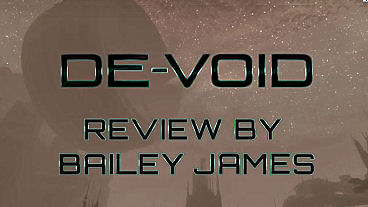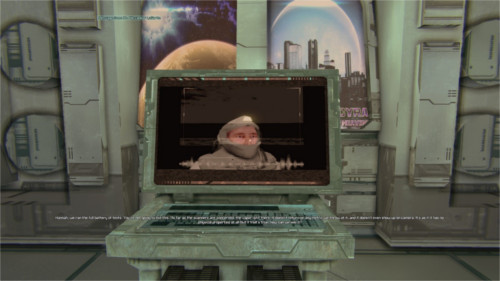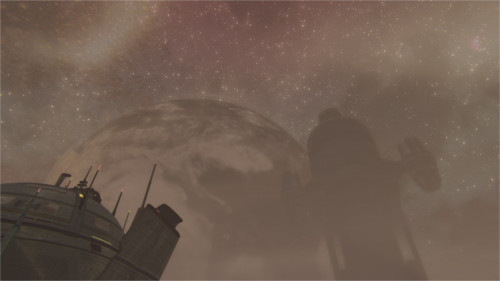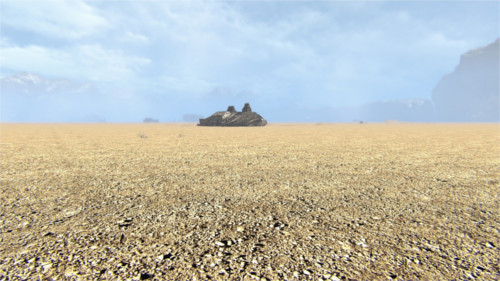
De-Void Review
A stupefyingly dull pastiche of fragments from better games that all blend together to create something formless







Genre: Adventure
Release date: September 2, 2016
Some games tell unique and inventive stories about memorable characters. Some games challenge the player’s skills and intelligence. Some games are fun to play and visually pleasing.
De-Void, the newest release from indie studio Pulsetense Games, is none of those things.
Instead, it takes a mishmash of memorable elements from other pop culture properties and Frankensteins them together with clunky design to create a tepid lump you’ll forget about within minutes of slogging through the two-hour experience.
Have you ever taken a bunch of different colors of Play-Doh and mixed them together until they were an indistinct and unappealing gray-brown? That’s what the muddy story of De-Void feels like.
Initially I was grabbed by the premise of an abandoned space outpost and murmurings of a mysterious force tormenting the crew — the combination of mystery/suspense elements with science fiction settings has succeeded in the past. But the game starts abruptly, with our character waking on an abandoned planet in the unadorned cockpit of a ship and venturing out to discover what happened to the people who used to live and work there. This is accomplished through the discovery of generic diary entries and crew logs that tell of an unexplained force that causes people to experience mental illness.

Which character is filling in this backstory? I can’t tell the difference.
As you explore, you begin to learn more about your character. She is Elizabeth Woolgather, an ironic name choice given that “woolgathering” is to indulge in aimless and absentminded thoughts, which seem to be what constitutes this story. Elizabeth has no character traits of her own and instead simply wanders around gathering anecdotes of unsettled thoughts and pathological behavior. The result isn’t a story that unfolds as much as it is one that keeps being reiterated — tales of mental disturbance followed by death or disappearance keep turning up, like the same point being underlined over and over.
All of the narrative elements feel too familiar. I recognized pieces of many things I like, among them the horror elements of the movie Alien and the gameplay mechanics and philosophical questioning of the game SOMA, but there was no special sauce to tie all the flavors together
First, a small positive. De-Void has some tantalizing views—large, looming planets in the sky suggests a claustrophobia that dovetails nicely with the game’s horror themes. But even these scenes are muddied by a hazy scrim that looks painted over the atmosphere. I don’t understand why the game’s artists compromised what should have been some of the most colorful and awe-inspiring shots with this backdrop. I was reminded of one of my favorite scenes from Myst III: Exile, which takes place on a foggy planet that appears to be lifeless when the player first arrives. But when the player figures out how to disable the surrounding force field, a stunning crimson sky is revealed and, with it, the promise of survivors on the surface of the planet. It’s dazzling and emotional and uses the environment to help tell the story. But De-Void’s monochrome sky is just a depressing set piece that’s a drag to look at.

Even worse is when the player enters a sort of “vision state” that, as far as I can tell, places the character in the “anomalies” the crew members have reported. These sequences strip all color from the already monochrome landscape and force the player to walk around a black and white version of the world until the philosophical voiceover has ended. It’s difficult to see and downright tedious.
The level design in this game was noticeably bad right from the start. The spaceport you begin on is winding and full of pointless dead ends, and the environments lack a sense of organic flow. I found myself getting lost often, and having to traverse the buildings in black-and-white mode was even worse. The recurrence of similar-looking hallways and computer terminals made it difficult to tell if I had discovered a new area or looped back to an old one.
But that isn’t the most unforgivable part. Once your character’s consciousness is transported to the planet’s surface to investigate the anomalies, you are forced to travel across an utterly flat desert to discover more pieces of information about the missing crew. And when I say utterly flat, I mean you will gladly give up a kidney to stop seeing all this sand. Moving between each piece of rubble probably took at least a minute of real world time with nothing changing except the distant shape you’re walking toward growing gradually larger. One minute doesn’t sound like much time, but I encourage you to look at the picture below for 60 uninterrupted seconds and tell me you don’t get fidgety.

This desert trek is made all the more frustrating by the fact that it was impossible to tell whether I’d discovered everything I was supposed to see or whether it was necessary to venture into this part of the landscape at all. My patience was strained to the breaking point when, after spending a mind-numbing half hour “completing” the desert segment and moving to a different part of the game, I encountered a sequence that ended up transporting me back into the middle of the desert, forcing me to walk through it a second time.
The game’s design, from start to finish, feels totally haphazard. Linear and open-world games alike require visual cues like lights, colors, and landmarks to guide player movement, and that intentioned structuring is something a player rarely notices or appreciates unless it’s missing. Believe me, I noticed.
By the end of this game, I felt extremely frustrated. Though the unmotivated design and bland visuals added to my irritation, what really aggravated me was the co-opting of interesting ingredients to create such an uninspired end product. To be clear, games are allowed to borrow an effective storytelling mechanic (diary entries that deliver backstory) or an aesthetic (dusty boiler room chic) or an idea (the psychological and literal isolation of outer space). But those games must then surprise us in other ways and add something new for their successors to steal.
So why, after all my griping, am I giving this game a C-? De-Void is being rated on the low end of average because it doesn’t deserve to be called bad. “Bad” implies that the game has tried to do something and failed in a significant way. But De-Void doesn’t try to do anything. It creates a stupefyingly dull pastiche of fragments from better games that all blended together to create something formless. To give this game an F would be to imply that it fouled so spectacularly that there is something worth reveling in, but that isn’t the case. It’s just boring.
|
+ A few interesting views
– Derivative story
– Tedious visuals
– Clunky level design
– Frustrating flow
– No artistic or creative vision
|
 |

Leave a Reply